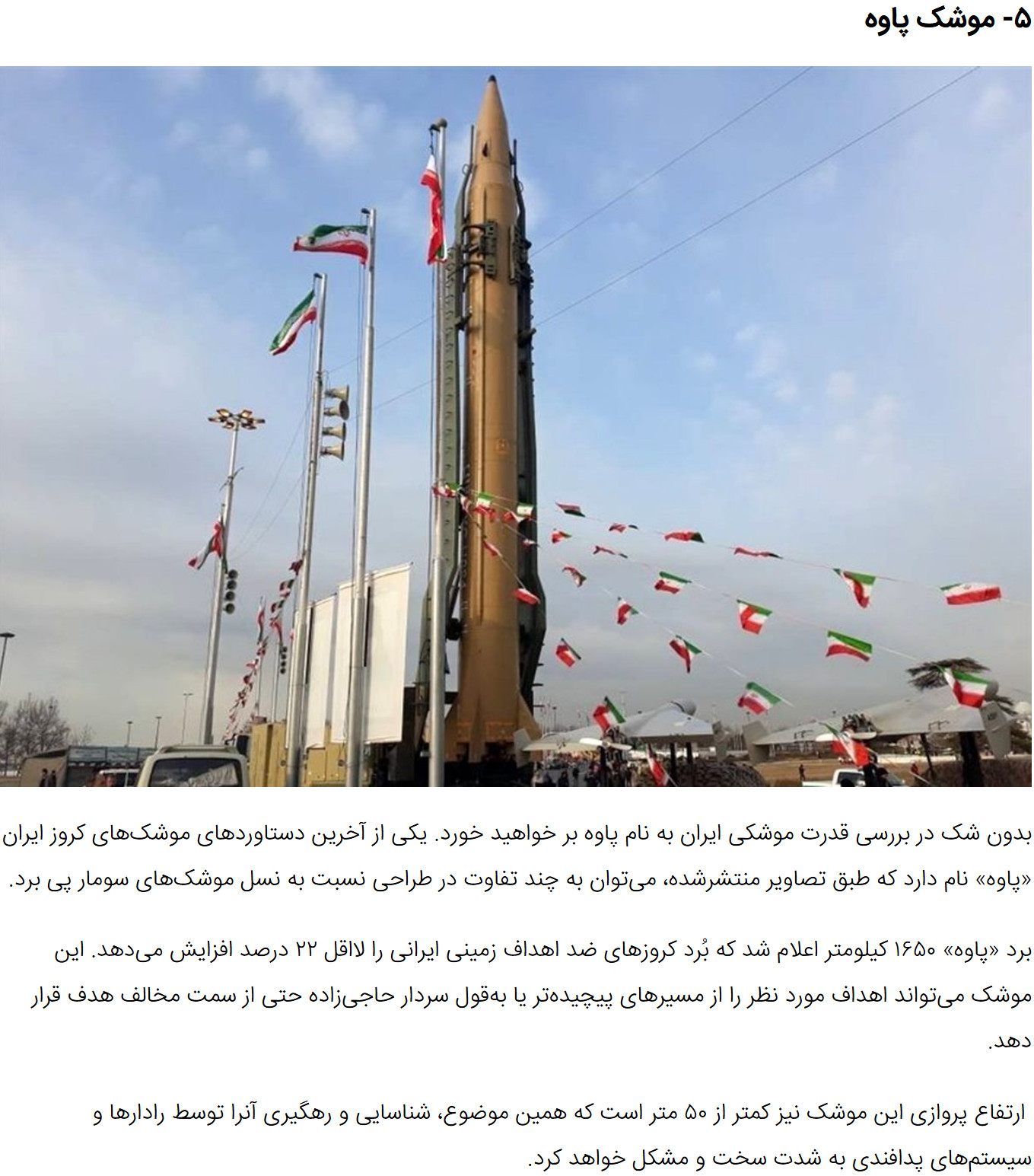The Paveh missile is one of the latest and most advanced achievements in Iran’s long‑range cruise missile program. When exploring Iran’s missile capabilities, one will undoubtedly come across the name “Paveh,” which stands out as a significant milestone in the evolution of the country’s precision‑guided weapons. Compared to the earlier Somar generation of missiles, the Paveh showcases several design enhancements that reflect a focus on extending range, maneuverability, and stealth.
With an announced range of approximately 1,650 kilometers, the Paveh missile increases the range of Iran’s ground‑attack cruise missiles by at least 22 percent. Its enhanced range allows it to cover longer distances and operate from more complex attack profiles. According to General Hajizadeh, one of the key advantages of the Paveh is its ability to approach its target from unexpected angles, including from the opposite direction, making it a highly flexible and unpredictable weapon.
The Paveh missile is designed for low‑altitude flight, traveling at altitudes of less than 50 meters above the ground. This terrain‑hugging flight path significantly complicates detection and interception efforts, making it extremely challenging for enemy radars and air defense systems to track or neutralize it in time. Its precision, long range, and stealth characteristics have positioned the Paveh as a critical component of Iran’s growing missile capabilities.
With these advances, the Paveh missile not only strengthens Iran’s long‑range offensive power but also demonstrates its growing expertise in producing sophisticated, highly survivable cruise missiles that can adapt to modern battlefields and threats.
Check Also
The funeral ceremony for the deceased members of the Vice President’s family
The evening of Monday, December 17, 1404, marked one of the most solemn and heartbreaking …

